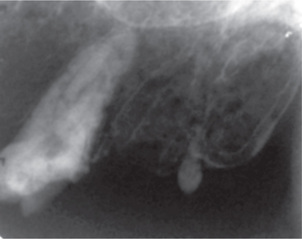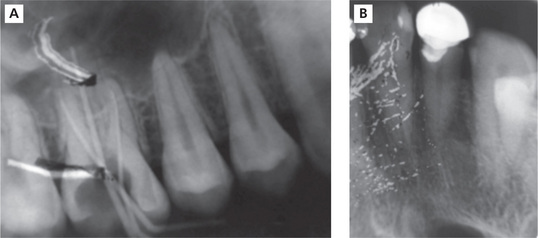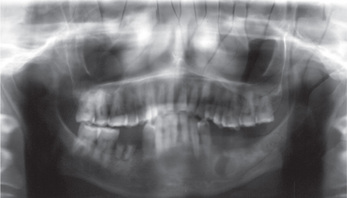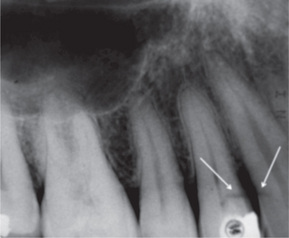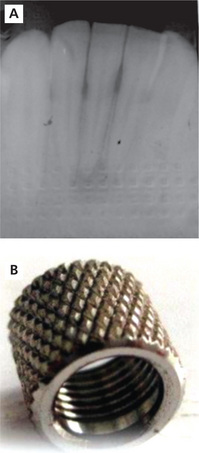Radiographic Faults
Errors in Film Storage and Handling
Film Fog
The overall appearance of the radiograph is dark. The radiographic image will show decreased image contrast and detail and as some authors believe they appear as though the radiographs are being viewed through a fog thereby obscuring the image (Figure 1).
Emulsion Peel and Scratched Film
Causes
 Wet film in contact with finger nails or other sharp objects such as film clips (Figure 2A, B).
Wet film in contact with finger nails or other sharp objects such as film clips (Figure 2A, B).
 Placing wet films on unclean surfaces.
Placing wet films on unclean surfaces.
 After processing, films must not come into contact with each other until completely dry as the wet emulsions can stick together and peel off the emulsions when they are separated.
After processing, films must not come into contact with each other until completely dry as the wet emulsions can stick together and peel off the emulsions when they are separated.
Dark Spots or Lines
Cause
 Dark finger marks: from improper handling of the film (holding the film with greasy fingers on the surface of the film, especially when the fingers are contaminated with developer solution).
Dark finger marks: from improper handling of the film (holding the film with greasy fingers on the surface of the film, especially when the fingers are contaminated with developer solution).
 Clear finger marks or white fingerprint marks can be caused by fixer solution or oily substances on the fingers that prevent the emulsion from developing.
Clear finger marks or white fingerprint marks can be caused by fixer solution or oily substances on the fingers that prevent the emulsion from developing.
Static Electricity Artifact
Causes
Static electricity artifacts are formed due to the build-up of electrons in the emulsion. They are frequently caused by low humidity/dry weather or static producing objects such as synthetic materials used in uniforms. Moreover, when films are removed from the film packet or the cassette too rapidly in a dry atmosphere, a small charge of electricity can be released producing these artifacts.
Static artifacts have two common appearances: tree like and smudges. Tree like artifacts (Figure 3) are produced when films are unwrapped rapidly and appear as black lines running across the film and smudge static electricity is produced by polyester clothing and appear as black smudges on the film.
Errors in Film Placement and Projection Technique
Stay updated, free dental videos. Join our Telegram channel

VIDEdental - Online dental courses






